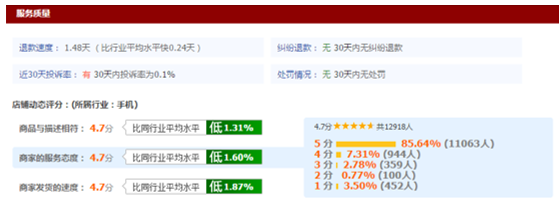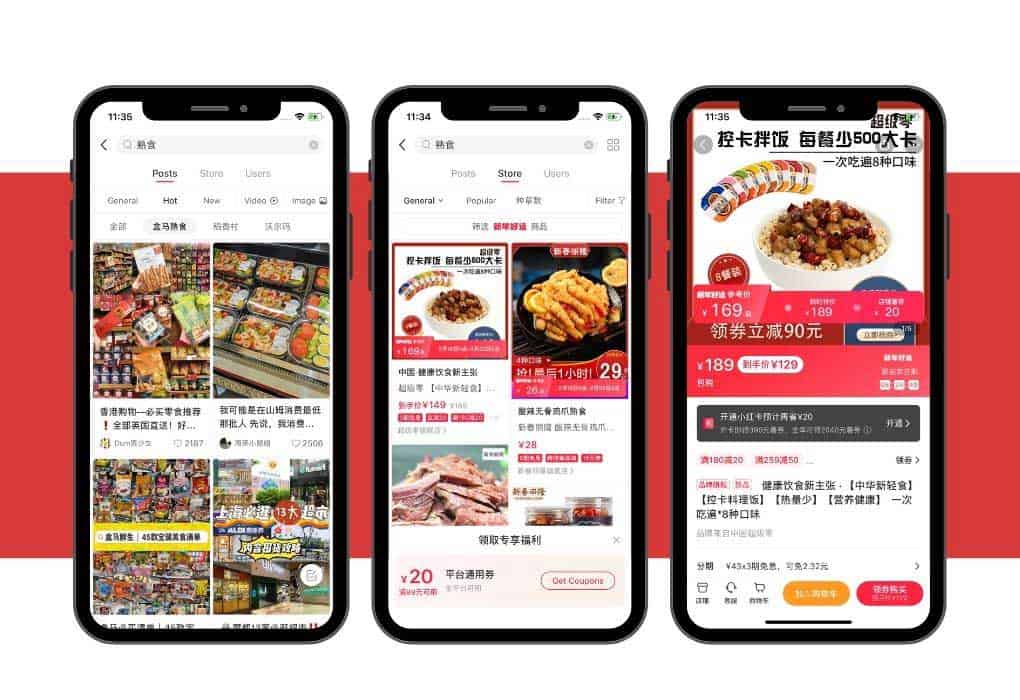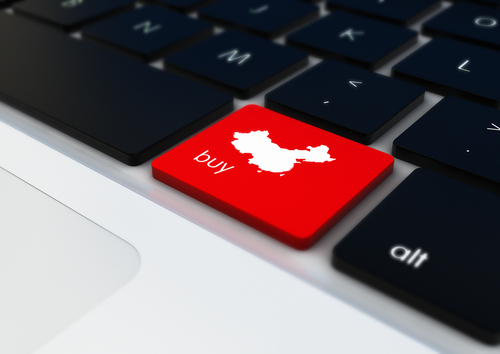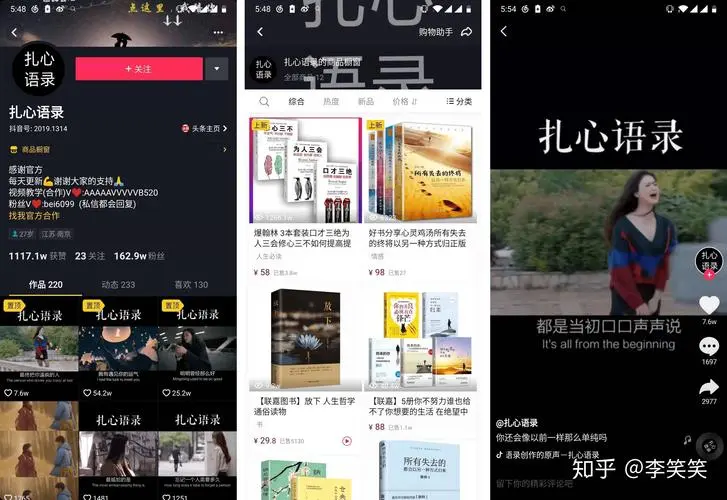To successfully navigate the e-retail landscape in China for 2024, Brands must adapt to rapidly evolving Chinese consumer behaviors, technological advancements, and regulatory changes.
Implement Cross-Border E-Commerce Strategies in China
-
- Explanation: As Chinese consumers seek international brands and products, setting up a cross-border e-commerce strategy can tap into this growing demand. This involves understanding import regulations and partnering with local logistics providers.
- Case Study: Korean cosmetics brand Innisfree has leveraged cross-border e-commerce platforms to successfully enter the Chinese market without physical stores, catering to the enormous demand for Korean beauty products.
By integrating these strategies, e-retailers in China can not only stay competitive but also build a loyal customer base and drive sustainable growth in one of the world’s largest e-commerce markets.
Douyin, the best ways to increase your online sales
The boom of Douyin ecommerce has fundamentally changed the buying habits of Chinese consumers.
It is estimated that people in rural areas, very connected, should consume more than urban people in less than 10 years. To meet this demand, three of the most important players of online business – Alibaba, Suning and JD – have planned to build tens of thousands of outlets scattered across the country. It’s time for you to take advantage of this opportunity but promoting your products to China may be a long obstacle run and you will face many competitors. However, like Sun Tzu, we believe that “there are no impregnable fortresses, there are only bad attackers”.
1. Customer service is Vital

Give your visitors the opportunity to dialogue directly with you. This feature, really popular in the Middle Kingdom, allows your potential customers to ask you any question regarding the availability of a product, the delivery time or about any other topic which is not sufficiently explicit on your website. This also usually removes doubts in the minds of Chinese consumers and allows you to appear as a brand close to its customers.
2. Turn your customers into your best ambassadors, Word of Mouth
Encourage your existing purchasers to communicate around your brand and your products. In China, where social media are kings, a recommendation issued by a friend, or a family member, worths any marketing campaigns in the world. You can reward those whom play the game in different ways: offer them a discount on the next purchase, send them a free sample of a product, give them access to exclusive content…
3. Free gift : Offer shipping costs.
On this point, Chinese people do not really differ from other consumers. Indeed, in China as elsewhere in the world, free delivery remains an important lever to increase your conversion rate and even the average cart of your customers. So, calculate any additional cost you might add and revise your prices if necessary. Keep in mind that the abandonment cart usually appears when shipping costs are added.
The strategy of offering free gifts in e-commerce in China is a powerful marketing tool that leverages Chinese cultural norms and consumer behaviors to boost sales and enhance customer loyalty. This strategy is particularly effective due to several factors specific to the Chinese market:
Cultural Appeal of Gifting
In China, gift-giving is deeply ingrained in the culture as a way to build relationships and show respect. Offering free gifts taps into this cultural practice, making the shopping experience more appealing. E-commerce businesses can harness this aspect by presenting free gifts as a sign of appreciation towards customers, which resonates well with the local audience.
Increase in Perceived Value
Providing free gifts with purchases can significantly increase the perceived value of an offer. Consumers are more likely to purchase a product if they feel they are getting more for their money. This is especially true in highly competitive markets like China, where consumers often compare deals across multiple platforms before making a purchase decision.
Encouragement of Larger Purchases
Free gifts can be used strategically to encourage customers to spend more. For instance, an e-commerce platform might offer a free gift for purchases over a certain amount. This not only increases the average order value but also makes customers feel rewarded for spending more.
Improvement in Customer Satisfaction and Retention
Free gifts can enhance customer satisfaction by exceeding customer expectations. This surprise and delight tactic can lead to higher customer retention rates, as satisfied customers are more likely to return for future purchases. Additionally, these happy customers may share their positive experiences on social media, attracting new customers.
Strategy Implementation
To implement this strategy effectively, it’s crucial for businesses to choose gifts that are desirable and relevant to the customer’s interests. The gifts should complement the purchased products or be something that adds value to the customer’s lifestyle. Additionally, the timing and promotion of free gifts should be well-planned to maximize impact, such as during festivals, holidays, or shopping events like Singles’ Day.
Businesses should also be mindful of the cost implications of free gifts. The cost must be balanced against the potential increase in sales and customer loyalty to ensure profitability.
4. Reviews , the fuel of Ecommerce in China

Allow your customers to publish their opinions about your products is an essential element in the buying process. Indeed, several studies have demonstrated the real impact of the presence of rates and detailed reviews. They showed that people were more likely to buy on a website endowed with this type of interaction.
Optimizing reviews on e-commerce platforms in China is crucial for building trust, improving product visibility, and ultimately driving sales. Here are four practical tips for making the most of reviews on Chinese e-commerce platforms:
- Encourage Customer Reviews: Actively encourage your customers to leave reviews by making the process as easy as possible. This can be done through post-purchase emails, in-app notifications, or even offering incentives for leaving a review. Ensuring that the product meets or exceeds expectations will naturally lead to more positive reviews.
- Respond to Reviews: Show that you value customer feedback by responding to reviews, both positive and negative. This engagement demonstrates good customer service and can turn a negative review into a positive customer service showcase. It’s especially important to address issues raised in negative reviews promptly and effectively.
- Utilize Review Analytics: Use the data from reviews to gain insights into customer preferences, product performance, and potential areas for improvement. This can help guide product development, marketing strategies, and inventory management. Many e-commerce platforms provide tools that analyze review data, which can be incredibly valuable.
- Leverage Positive Reviews in Marketing: Highlight positive reviews and testimonials in your marketing materials. On platforms like WeChat or Weibo, sharing user testimonials can significantly enhance your brand’s credibility and attract new customers. Positive reviews can also be featured prominently on product pages to reassure potential buyers about the quality of your products.
5. Video, the 2024 marketing tool
According to Invodo, purchase intentions are almost doubled after watching a video. Moreover, usually explicit and therefore more easily understood by users, videos which promote your products and services, or highlighting the strengths of your business, are easily shared on social networks.
6. Be Social (or die)

Online commerce via social networks is one of the last great Chinese ecommerce trends. If a majority of Internet users continues to look for information on the products they wish to purchase on Tmall or Baidu, they are more and more people likely to purchase through social networks.
In China’s dynamic market, the adage “Be Social or Die” is particularly pertinent for brands due to the unique digital landscape and consumer behavior.
- Social Media Dominance: China boasts a vast digital ecosystem with platforms like WeChat, Weibo, Douyin (TikTok), and Xiaohongshu (Little Red Book) playing central roles in daily life. Unlike Western markets where multiple channels can be used to reach consumers, in China, social media is not just an option but a necessity due to its pervasive influence.
- Consumer Expectations: Chinese consumers expect brands to be active on social media. They look for real-time engagement, prompt customer service, and community involvement through these platforms. Social media presence is often equated with brand legitimacy and reliability in the consumer’s eyes.
- E-Commerce Integration: Many social media platforms in China seamlessly integrate e-commerce functionalities. This means consumers can go from discovering a product to purchasing it without ever leaving the app. Brands that effectively utilize these features can significantly boost their sales and enhance user experience.
- Influencer Culture: Influencer collaborations and Key Opinion Leader (KOL) endorsements are immensely effective in China. Social media platforms provide the perfect environment for influencers to share brand content, offer reviews, and influence buying decisions.
- Viral Marketing Potential: The potential for rapid dissemination of content through social networks offers brands the chance to go viral, gaining significant exposure quickly. Engaging content that resonates with Chinese cultural values or trends can lead to extensive media coverage and consumer interest.
- Brand Storytelling: Social media platforms are key venues for storytelling and building brand identity. Effective storytelling that aligns with Chinese values and lifestyle can foster deep connections with the audience, building long-term brand loyalty.
In summary, for brands in China, social media isn’t just a marketing tool; it’s a critical platform for sales, customer engagement, and brand building.
7. Ereputation in China
Being trusted by Chinese netizens takes time. This confidence is nevertheless essential for anyone whom wants to have its share of the enormous cake of the Chinese ecommerce.
In China’s dynamic market, the adage “Be Social or Die” is particularly pertinent for brands due to the unique digital landscape and consumer behavior. Here’s why being actively engaged on social media is crucial for brands in China:
- Social Media Dominance: China boasts a vast digital ecosystem with platforms like WeChat, Weibo, Douyin (TikTok), and Xiaohongshu (Little Red Book) playing central roles in daily life. Unlike Western markets where multiple channels can be used to reach consumers, in China, social media is not just an option but a necessity due to its pervasive influence.
- Consumer Expectations: Chinese consumers expect brands to be active on social media. They look for real-time engagement, prompt customer service, and community involvement through these platforms. Social media presence is often equated with brand legitimacy and reliability in the consumer’s eyes.
- E-Commerce Integration: Many social media platforms in China seamlessly integrate e-commerce functionalities. This means consumers can go from discovering a product to purchasing it without ever leaving the app. Brands that effectively utilize these features can significantly boost their sales and enhance user experience.
- Influencer Culture: Influencer collaborations and Key Opinion Leader (KOL) endorsements are immensely effective in China. Social media platforms provide the perfect environment for influencers to share brand content, offer reviews, and influence buying decisions.
- Viral Marketing Potential: The potential for rapid dissemination of content through social networks offers brands the chance to go viral, gaining significant exposure quickly. Engaging content that resonates with Chinese cultural values or trends can lead to extensive media coverage and consumer interest.
- Brand Storytelling: Social media platforms are key venues for storytelling and building brand identity. Effective storytelling that aligns with Chinese values and lifestyle can foster deep connections with the audience, building long-term brand loyalty.
In summary, for brands in China, social media isn’t just a marketing tool; it’s a critical platform for sales, customer engagement, and brand building. Failing to effectively engage on these platforms can result in a significant disadvantage in a highly competitive market. Brands that understand and leverage the power of social media in China are more likely to succeed and thrive.
8. Offer discount coupon to your customers

Vouchers and flash promotions are powerful marketing tools. Brands can use them to promote the launch of a new product or for decrease the amount of unsold products in stock. Be sure to always clearly display your current promotions and to share them on social networks.
9 Enhance Mobile Shopping Experience
-
- Explanation: With the majority of online shopping in China conducted via mobile devices, optimizing e-commerce platforms for mobile is crucial. This includes seamless mobile payment options, user-friendly interfaces, and fast loading times.
- Case Study: JD.com has successfully integrated its mobile platform with superior user experience designs that simplify the shopping process, leading to increased user retention and sales.
10 Engage Through UGC Commerce
-
-
- Explanation: Platforms like WeChat and Xiaohongshu blend social interaction with e-commerce, allowing users to share, like, and comment on products. Integrating social features into your e-commerce strategy can drive sales and foster community around your brand.
- Case Study: Xiaohongshu (Little Red Book) has become a hub for fashion and beauty brands, with users heavily relying on peer recommendations before making purchases.
-

11 Collaborate with Key Opinion Leaders (KOLs) and Influencers
-
-
-
- Explanation: Influencer marketing is highly effective in China. Collaborating with KOLs can help brands gain trust and extend their reach to potential customers.
- Case Study: Luxury brand Louis Vuitton teamed up with popular Chinese celebrities and KOLs to create exclusive content on Weibo, significantly enhancing brand visibility and sales.
-
-
12. Localized Content, product & Packaging
-
- Explanation: Content that resonates culturally with Chinese consumers can significantly boost engagement. Tailoring content to regional languages, cultural nuances, and local holidays can enhance relevance.
- Case Study: Nike’s localized advertising campaigns during Chinese New Year have consistently resonated with local consumers, blending cultural heritage with modern sports aesthetics.
Localizing content, products, and packaging for the Chinese market is essential for international brands seeking to establish a strong presence in China. Here are four practical tips to effectively tailor these elements:
- Understand Cultural Nuances: Before designing products and content, it’s crucial to understand Chinese cultural values, traditions, and taboos. This understanding should guide product development and content creation to ensure they resonate with local consumers. For instance, certain colors such as red and gold are highly favored in China due to their auspicious meanings, while others might be avoided due to cultural associations with bad luck.
- Adapt Your Marketing Messages: Localize your marketing communications and promotional content to reflect local language nuances, slang, and regional expressions. This not only involves translating content accurately but also adapting it to fit the local context and appeal to the emotional and cultural sensibilities of Chinese consumers. For example, branding messages that emphasize community and collectivism often perform well in China, aligning with the societal focus on harmony and collective welfare.
- Customize Product Offerings: Tailor your products to meet local tastes and preferences. This can include adjusting sizes, flavors, or even functionalities of products to better suit the local market. For example, skincare brands often develop lighter formulas specifically for the Asian market where there is a preference for non-greasy, light-textured products due to the humid climate.
- Localize Packaging Design: Packaging design should not only be visually appealing but also culturally appropriate. Include local languages on the packaging and consider elements that appeal specifically to Chinese consumers. Packaging that incorporates local artistic styles or culturally significant symbols can enhance the attractiveness of the product. Moreover, during key festivals like Chinese New Year, limited edition packaging that reflects the festivity can significantly boost sales.
Successfully localizing these elements involves a deep dive into the local culture and consumer behavior, continuous testing, and adaptation to refine approaches that work best in the Chinese market.
13 Ensure Compliance with Local Regulations
-
- Explanation: China’s regulatory environment for digital commerce is stringent and evolving. Compliance with data protection laws, consumer rights, and local e-commerce regulations is mandatory to operate smoothly.
- Case Study: Apple had to adjust its data storage practices to comply with China’s cybersecurity laws, including moving Chinese users’ iCloud data to local servers operated by a Chinese company.
14 Leverage Advanced Data Analytics
-
- Explanation: Utilize big data to understand consumer preferences and purchasing behaviors. Advanced analytics can help tailor marketing strategies and optimize inventory management.
- Case Study: Alibaba’s use of big data during the Singles Day shopping festival to offer personalized product recommendations has significantly boosted sales and customer satisfaction.
Leveraging advanced data analytics on platforms like Douyin can significantly enhance your marketing strategies and improve ROI. Here are five tips on how to effectively use data analytics with Douyin to boost your brand’s performance in China:
- Utilize User Engagement Data: Analyze user engagement metrics such as likes, shares, comments, and viewing times to understand what type of content resonates most with your audience. This data can help refine your content strategy to produce more of what works and less of what doesn’t.
- Segment Your Audience: Use data analytics to segment your audience based on demographics, behavior patterns, and engagement levels. This segmentation can help in crafting more personalized marketing messages and content that are likely to appeal to different segments, increasing the effectiveness of your campaigns.
- Optimize Ad Spend: Analyze the performance data of different ad sets and campaigns to see which ones are performing best in terms of conversion rates, cost per click (CPC), and return on ad spend (ROAS). Use this data to adjust your budget allocation, focusing more resources on high-performing ads and less on those that underperform.
- Predictive Analytics: Implement predictive analytics to forecast future trends based on historical data. This can include predicting the best times to post, understanding which types of products might become popular, and anticipating changes in consumer behavior. These insights can help you stay ahead of the curve and adjust your marketing strategy proactively.
- Track and Analyze Influencer Performance: When collaborating with influencers on Douyin, it’s important to track the performance of each influencer’s content. Analyze metrics such as engagement rates, traffic they drive to your site, and conversion rates they achieve. This data can help you determine which influencers to continue working with and how to structure future collaborations.
By integrating these data-driven strategies, brands can maximize their presence on Douyin, ensuring that each decision is supported by robust analytics, thereby enhancing the impact of their marketing efforts in the competitive Chinese market.
These 15 advices done by GMA will be helpful to increase your online sales. However, you need to be found in the first place. We can help you to improve your ecommerce and your brand awareness.
About GMA
Gentlemen Marketing Agency (GMA) is highly regarded for its effectiveness in integrating international brands into China’s e-commerce landscape. Here are five reasons why GMA is a perfect partner for international brands looking to establish or expand their e-commerce presence in China:
- Deep Understanding of the Chinese Market: GMA has extensive experience and understanding of the Chinese market, which is crucial for international brands. They know the local consumer behavior, preferences, and the unique challenges that foreign brands face in China. This allows them to tailor strategies that are culturally relevant and effective.
- Expertise in Digital Marketing: GMA specializes in digital marketing strategies that are crucial for success in China’s internet-heavy consumer environment. They are skilled in SEO, social media marketing, and online advertising — all tailored for platforms like Weibo, WeChat, Douyin, and Tmall. Their digital tactics are designed to enhance visibility and drive conversions.
- Strong E-commerce Integration: GMA helps brands integrate with major Chinese e-commerce platforms, such as Tmall, JD.com, and Pinduoduo. They handle everything from store setup, product listings, customer service to logistics management, making the transition seamless for international brands.
- KOL and Influencer Collaborations: Understanding the importance of Key Opinion Leaders (KOLs) and influencers in Chinese e-commerce, GMA has established strong networks with influential figures across multiple industries. They facilitate partnerships that can significantly increase brand awareness and credibility.
- Analytics and Market Insights: GMA provides comprehensive analytics and insights that help brands understand their market position and consumer reactions. This data-driven approach enables continuous optimization of marketing strategies and e-commerce operations, ensuring brands remain competitive and relevant in the fast-changing Chinese market.
By partnering with GMA, international brands can effectively navigate the complexities of the Chinese e-commerce ecosystem and achieve substantial growth and success. Their local expertise, combined with a profound understanding of both global and Chinese market dynamics, makes them an invaluable ally for any international brand aiming to thrive in China.
For enquiery,contact us please visit this link.













Very usefull article and interesting tips. Wish to start a collaboration with your agency quite soon.
Stephen